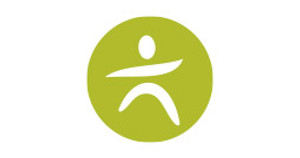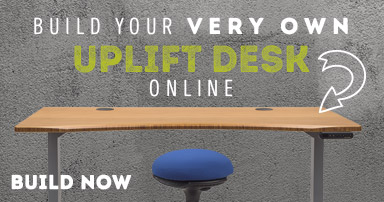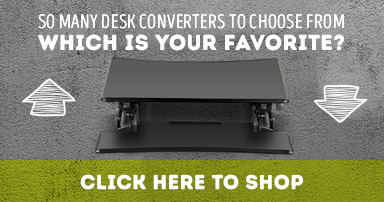Building Your BodyBilt Chair
Posted by Human Solution on Sep 15th 2014
When picking out an ergonomic chair, there's no one "best" chair out there, since comfort is ultimately something that requires the chair be adjusted to your needs, rather than the other way around. When it comes to personalized comfort, BodyBilt chairs are some of the best on the market, but the vast array of options - namely, the BodyBilt-specific options such as the mechanism, lumbar support, back cushion, and seat - can be daunting at first glance. Luckily, once you know what works best for you, it's easy to order a BodyBilt chair that's built to your needs.
The mechanism of your BodyBilt chair serves as the "core" of the chair, housing the controls for your chair's recline mechanism, height adjustment, and seat slider. The most popular of these mechanisms is the J mechanism, which gives independent adjustment of both the seat and back angle as well as seat depth. Both the seat and back tilt pivot from the center of the seat. The E mechanism is similar to the J mechanism, featuring seat angle, back angle, and seat depth adjustment. However, the E mechanism differs in that it pivots closer to the front of the seat, which gives it a larger range of forward tilt and recline compared to the J mechanism. If yourself reclining more often in your office chairs, the E mechanism an excellent option. Finally, there's the R mechanism, which offers a simpler set of adjustments if you're looking for a chair that requires minimal effort to adjust. The R mechanism is BodyBilt's take on the synchro-tilt mechanism, which increases the seat and back tilt at a preset ratio - roughly 2.3 degrees of back tilt for every 1" of seat tilt. The R mechanism also allows for independent back angle and seat angle adjustment when necessary, as well as a tilt tension adjustment, allowing you to fine-tune your chair's recline resistance.
BodyBilt chairs also feature two comfortable lumbar support options that can further improve lower back comfort while seated. While the chairs come standard with a molded foam backrest that features a pronounced lumbar support, this can be replaced with either an air lumbar or a S'port foam lumbar support. The air lumbar support functions in much the same way as a pressure cuff at the doctor's office - squeeze the bulb to inflate the bladder inside the chair back, and you'll be rewarded with a firmer, more pronounced lumbar support that can be "reset" by simply holding the air release button. The S'port foam option is a much more traditional support, taking the same shape as the stock lumbar support and replacing it with a thick, comfortable S'port memory foam pad, perfect for long workdays. Likewise, the back support on a BodyBilt chair comes standard with durable, comfortable multi-density foam, giving them an edge in comfort over traditional office chairs. This padding can be further supplemented by BodyBilt's S'port memory foam for an even softer cushion. For those in need of extra thoracic support, there's also the S'port Ridge option, which creates a raised, vertical foam cushion that runs along the spine to reduce tension in the upper back. However, the S'port Ridge isn't for everyone; for more details be sure to check out our blog post regarding exactly what it is and what it does.
Of course, it wouldn't be a BodyBilt chair without one of their signature seat options. BodyBilt chairs feature three unique seat pan designs, each with a different contour style. The most common option, the #7 seat with moderate contour, helps to minimize pressure points and better distributes your weight while seated. By combining this seat with the seat slider provided by the chair mechanism, it's easy to fit the seat to your body. The #8 seat with minimal contour is another common option, utilizing a flatter surface with rounded sides and backs that are designed to prevent you from "bottoming out" along the sides of the chair. Finally, the #2 seat with high contour mimics the shape of a tractor seat, utilizing a pronounced central pommel that encourages you to sit further back in your chair, especially in a forward tilt position. The #2 seat is the least popular of the BodyBilt seats, as it encourages a static posture that does not allow for you to cross your legs or move around in your chair.
While this isn't a comprehensive explanation of all the options available on BodyBilt's chairs, hopefully it makes the more unique aspects of BodyBilt building a bit easier to understand. If you still need help picking out a BodyBilt chair that's perfect for you, you can contact us directly at 1-800-531-3746 and we'll be glad to help you build it out!
Learn more about BodyBilt chairs at TheHumanSolution.com.
Related Reads




